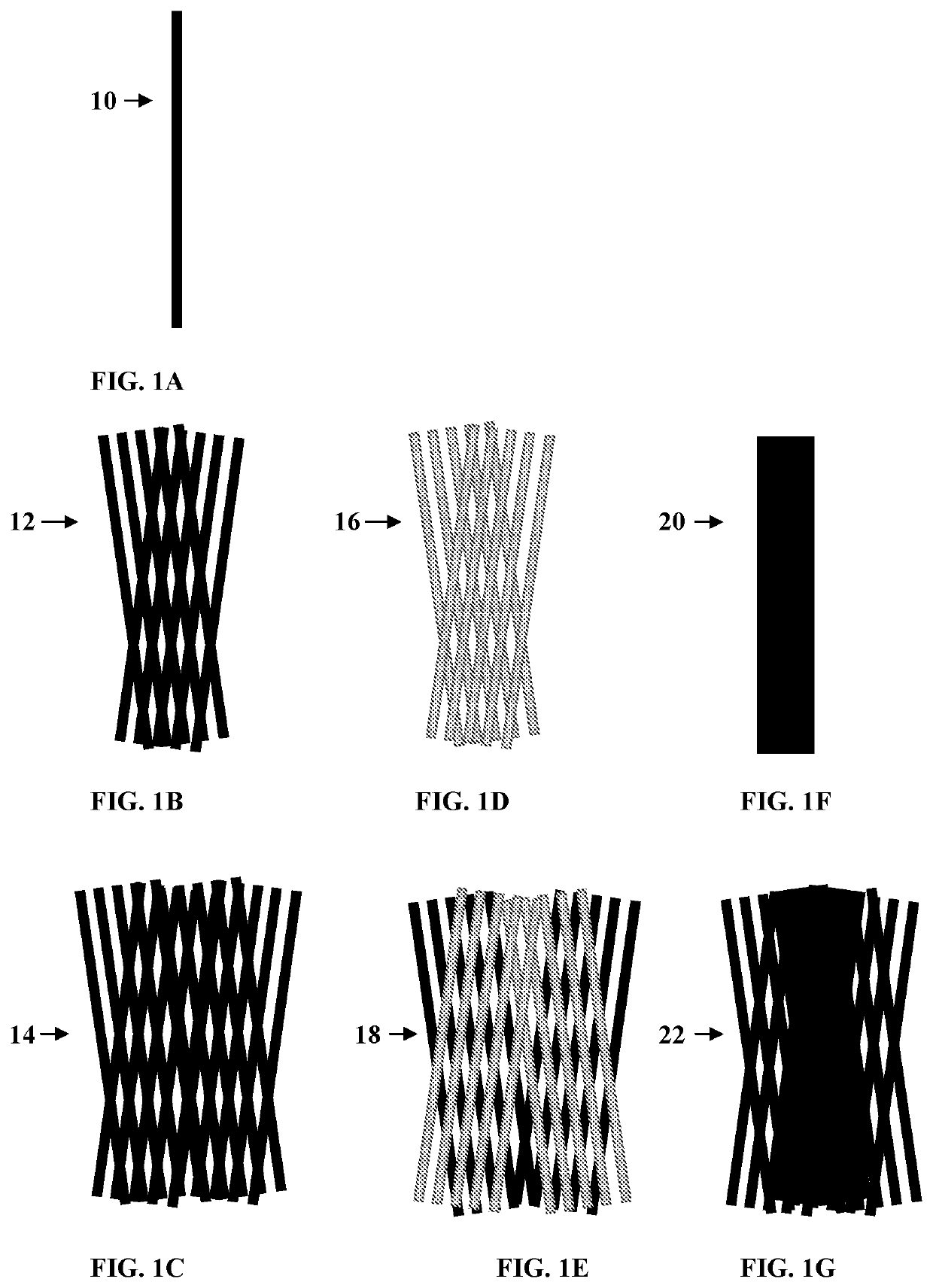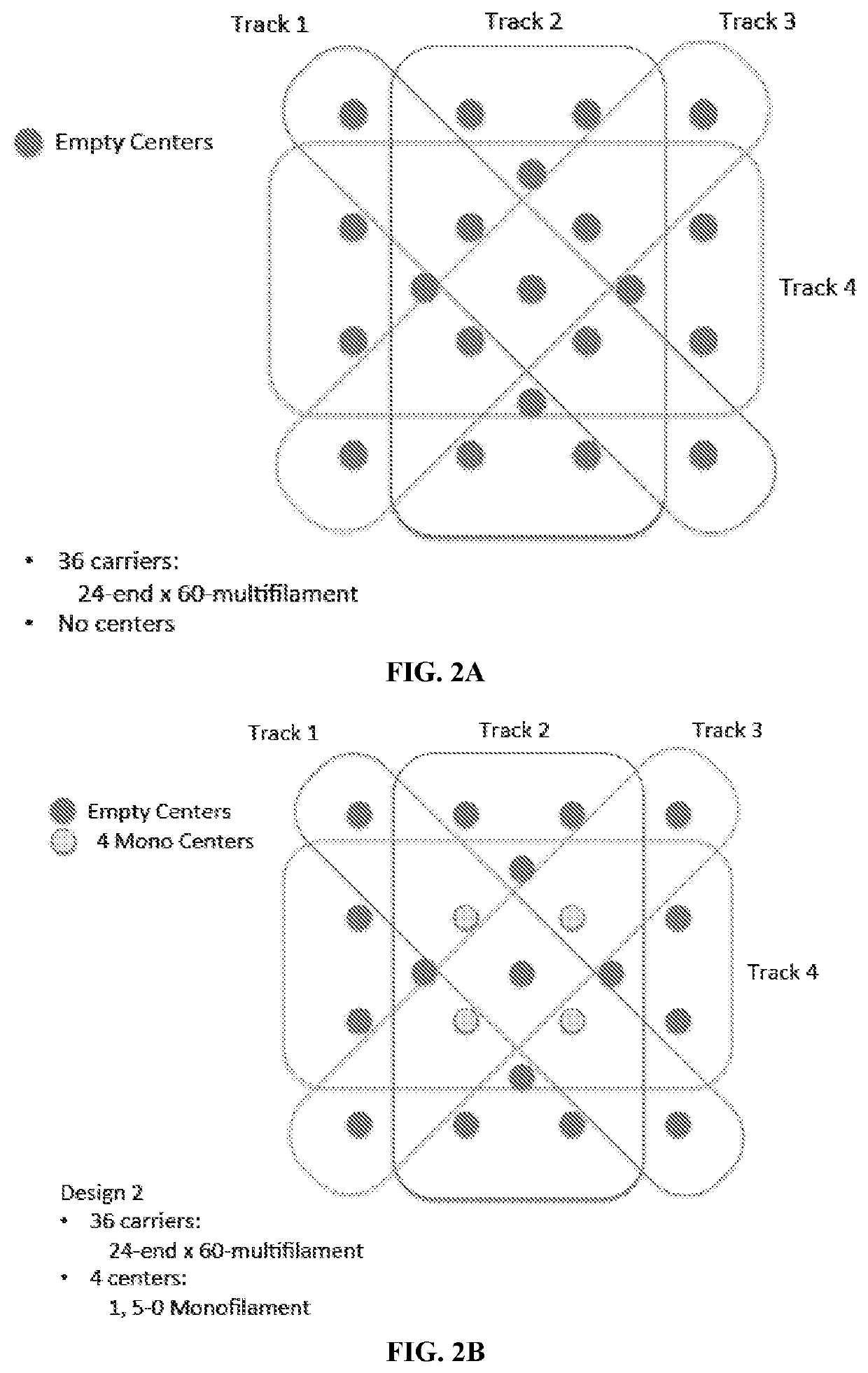Complex braided scaffolds for improved tissue regeneration
a complex braided scaffold and tissue technology, applied in the field of implantable medical devices and prostheses, can solve the problems of insufficient graft material for extensive or additional repair, inability to adapt to the needs of patients, so as to prevent stress shielding and encourage the regeneration of functional tissu
- Summary
- Abstract
- Description
- Claims
- Application Information
AI Technical Summary
Benefits of technology
Problems solved by technology
Method used
Image
Examples
example 1
hree-Dimensional Braided Scaffolds Formed with Various Braiding Designs
[0242]Materials and Methods
[0243]A four-track three-dimensional braiding technique was used to generate the tissue reconstruction devices. The yarns used in the carriers are monofilament fibers, multifilament yarns, composite multifilament yarns, composite yarns, or combinations thereof. See FIGS. 1A-1G.
[0244]Sixty (60) such filaments were twisted together to form one multifilament fiber, and 24 such multifilament fibers were twisted together to form one multifilament yarn (24-end×60 multifilament). Composite yarns used were multifilament fibers and monofilament fibers twisted together. Here 40 PLLA filaments each with 15 micron in diameter and one monofilament fiber were twisted around each other to form the composite yarns (mono / multi composite).
[0245]Results
[0246]The designs for yarn arrangement in the three-dimensional braider are presented in FIGS. 2A-2Q. The designs include monofilament-only designs for thr...
example 2
l Properties of Complex Three-Dimensional Braids
[0247]Materials and Methods
[0248]Two different complex braids, designated ‘D3’ and ‘D5’ were constructed.
[0249]D3 was made with 100% twisted P4HB multifilament yarns on all braider bobbins, with twisted PGA multifilament fibers and P4HB monofilament fiber bundles brought into the braid via 17 different center locations.
[0250]D5 was made with 56% of braider bobbins containing twisted P4HB multifilament and monofilament fiber bundles, 44% of braider bobbins containing only P4HB multifilament fiber, and PGA multifilament fiber bundles brought into braid via 17 center locations.
[0251]These devices were then mechanically tested at time zero, and following incubation in PBS over 1 year.
[0252]Results
[0253]D3 and D5 have similar chemical composition but differ in architecture, creating significant differences in mechanical properties.
[0254]After 4 weeks, devices containing PGA have reduced stiffness, indicating a 2 stage resorption profile as ...
PUM
| Property | Measurement | Unit |
|---|---|---|
| diameter | aaaaa | aaaaa |
| diameter | aaaaa | aaaaa |
| diameters | aaaaa | aaaaa |
Abstract
Description
Claims
Application Information
 Login to View More
Login to View More - R&D
- Intellectual Property
- Life Sciences
- Materials
- Tech Scout
- Unparalleled Data Quality
- Higher Quality Content
- 60% Fewer Hallucinations
Browse by: Latest US Patents, China's latest patents, Technical Efficacy Thesaurus, Application Domain, Technology Topic, Popular Technical Reports.
© 2025 PatSnap. All rights reserved.Legal|Privacy policy|Modern Slavery Act Transparency Statement|Sitemap|About US| Contact US: help@patsnap.com



